
Sarah
There are an estimated 403,000 people living in modern slavery in the United States (GSI 2018). Sex trafficking exists throughout the country. Traffickers use violence, threats, lies, debt bondage and other forms of coercion to compel adults and children to engage in commercial sex acts against their will. The situations that sex trafficking victims face vary, many victims become romantically involved with someone who then forces them into prostitution. Others are lured with false promises of a job, and some are forced to sell sex by members of their own families. Victims of sex trafficking include both foreign nationals and US citizens, with women making up the majority of those trafficked for the purposes of commercial sexual exploitation. In 2015, the most reported venues/industries for sex trafficking included commercial-front brothels, hotel/motel-based trafficking, online advertisements with unknown locations, residential brothels, and street-based sex trafficking. Sarah grew up in California. Her cousin was the leader of a gang and its members were often guarding the house. One of the gang members abused Sarah as a child and when her cousin found out, he was forced to retaliate, and Sarah now owed him. After this incident, she became a source of income and was put to work trafficking drugs. One day, her cousin bought her new dresses, took photos of her to sell to older men. When Sarah tried to seek help at school, she was locked up for a week as punishment. Later, when she was seventeen, Sarah’s cousin was arrested and though she was free from his control, she had nowhere to go and she was soon trafficked again by an old friend into adult entertainment. When she was 23, Sarah stole her second trafficker’s car keys and escaped. After living a life of abuse, trafficking, and drug abuse, Sarah struggled to go about ‘normal life.’ She talks about her journey overcoming her trauma and moving forward.

Rebecca
There are an estimated 403,000 people living in modern slavery in the United States (GSI 2018). Sex trafficking exists throughout the country. Traffickers use violence, threats, lies, debt bondage and other forms of coercion to compel adults and children to engage in commercial sex acts against their will. The situations that sex trafficking victims face vary, many victims become romantically involved with someone who then forces them into prostitution. Others are lured with false promises of a job, and some are forced to sell sex by members of their own families. Victims of sex trafficking include both foreign nationals and US citizens, with women making up the majority of those trafficked for the purposes of commercial sexual exploitation. In 2015, the most reported venues/industries for sex trafficking included commercial-front brothels, hotel/motel-based trafficking, online advertisements with unknown locations, residential brothels, and street-based sex trafficking. Rebecca was trafficked in Indiana, USA when she was twenty-one-years old. After being sexually assaulted at the age of fourteen, Rebecca began acting out and struggled with depression, anxiety, and began experimenting with drugs and alcohol. When she was twenty-one, she met a man almost twice her age and moved in with him just three weeks later. The man introduced her to crystal meth, controlled her movement and sold her to men for sex. Rebecca tells of how, despite leaving her trafficking situation, she struggled to come to terms with her exploitation and it affected her life for years afterwards
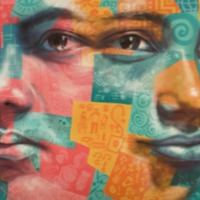
Sara B
There are an estimated 403,000 people living in modern slavery in the United States (GSI 2018). Sex trafficking exists throughout the country. Traffickers use violence, threats, lies, debt bondage and other forms of coercion to compel adults and children to engage in commercial sex acts against their will. The situations that sex trafficking victims face vary, many victims become romantically involved with someone who then forces them into prostitution. Others are lured with false promises of a job, and some are forced to sell sex by members of their own families. Victims of sex trafficking include both foreign nationals and US citizens, with women making up the majority of those trafficked for the purposes of commercial sexual exploitation. In 2015, the most reported venues/industries for sex trafficking included commercial-front brothels, hotel/motel-based trafficking, online advertisements with unknown locations, residential brothels, and street-based sex trafficking. Sara B fell in with the wrong crowd during high school and became addicted to drugs and alcohol. After school, Sara began working for an escort service where she believed she could earn good money. However, Sara did not receive any of the money she earned and felt like she could not leave. Sara’s drug addiction became worse, until one day she was taken to a drug house and raped by several men. It was after this that Sara decided she couldn’t do it anymore. She moved to St Louis, attended college, worked with inner-city kids and travelled to Thailand to council exploited women on how to get help. Sara is currently a health care worker.
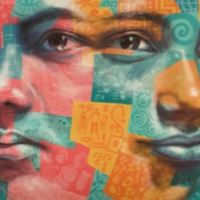
Byaombe
There are an estimated 1,045,000 people living in conditions of modern slavery in the Democratic Republic of Congo (GSI 2018). In 2016 several armed groups continued to abduct and forcibly recruit men, women and children as combatants and in support roles such as guards, cleaners, cooks and spies. In 2016, 184 cases of child soldiers were reported, with 1,662 children reported to have separated or escaped from armed groups. Child soldiers who manage to escape remain vulnerable to re-recruitment as adequate rehabilitation services remain unavailable to children suffering trauma, stigmatisation and the continued threat of armed groups. Byaombe tells of his experience of being a child soldier for the FDD militia in the Democratic Republic of Congo. He tells of how he was taught to kill, how he was given drugs and how there was little food or shelter at the military camp.
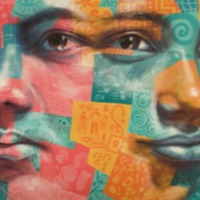
Madeleine
There are an estimated 1,045,000 people living in conditions of modern slavery in the Democratic Republic of Congo (GSI 2018). In 2016 several armed groups continued to abduct and forcibly recruit men, women and children as combatants and in support roles such as guards, cleaners, cooks and spies. In 2016, 184 cases of child soldiers were reported, with 1,662 children reported to have separated or escaped from armed groups. Child soldiers who manage to escape remain vulnerable to re-recruitment as adequate rehabilitation services remain unavailable to children suffering trauma, stigmatisation and the continued threat of armed groups. Madeleine was abducted by militia in her village in the Democratic Republic of Congo when she was 12 years old. She tells of how she was taught to kill, how she was given drugs and alcohol to numb their feelings. Madeleine was a child soldier for two years before she was rescued.
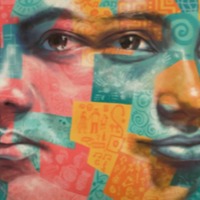
Ruksana
It is estimated that almost 8 million people are living in conditions of modern slavery in India (GSI 2018). The skewed sex ratio in some regions of India has fuelled the trafficking and selling of women and young girls as brides within India. Women are reportedly sold off into marriage by their families, sometimes at a young age, and end up enduring severe abuse, rape and exploitation by their husbands. It is also reported that women and girls from impoverished backgrounds have been lured by promises of marriage by younger men from urban areas, then forced into sex work once married. Ruksana was forced to marry her aunt’s son when she was 15 years old. Her husband was an alcoholic who would beat her if she refused to do anything he asked. Ruksana was finally able to get a divorce with the help of the Centre for Social Research.
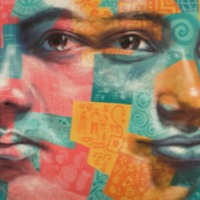
Amy A.
There are an estimated 136,000 people living on conditions of modern slavery un the United Kingdom (Global Slavery Index 2018). According to the 2017 annual figures provided by the National Crime Agency, 5, 145 potential victims of modern slavery were referred through the National Referral Mechanism in 2017, of whom 2,454 were female, 2688 were male and 3 were transgender, with 41% of all referrals being children at the time of exploitation. People are subjected to slavery in the UK in the form of domestic servitude, labour exploitation, organ harvesting and sexual exploitation, with the largest number of potential victims originating from Albania, China, Vietnam and Nigeria. This data however does not consider the unknown numbers of victims that are not reported. Amy’s sexual exploitation began at the age of 11 after fights with her mother led to long hours spent in local parks and town centres. After a few months she began spending time with one man who invited her to spend time with him and his friends at their flat. However, once there Amy was subjected to physical abuse daily. Not knowing how to escape or where she would go, Amy’s abuse continued until she was 13.
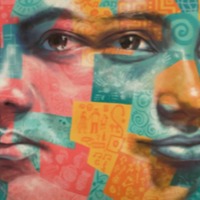
Chakali Mounika
It is estimated that almost 8 million people are living in conditions of modern slavery in India (GSI 2018). The skewed sex ratio in some regions of India has fuelled the trafficking and selling of women and young girls as brides within India. Women are reportedly sold off into marriage by their families, sometimes at a young age, and end up enduring severe abuse, rape and exploitation by their husbands. It is also reported that women and girls from impoverished backgrounds have been lured by promises of marriage by younger men from urban areas, then forced into sex work once married. Chakali Mounika received threats from her family after she refused to marry. While her marriage has been stopped with the help of MV Foundation, her father now refuses to allow her to go to school or leave the house.
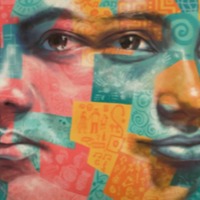
Kothagudem Madhavi
It is estimated that almost 8 million people are living in conditions of modern slavery in India (GSI 2018). The skewed sex ratio in some regions of India has fuelled the trafficking and selling of women and young girls as brides within India. Women are reportedly sold off into marriage by their families, sometimes at a young age, and end up enduring severe abuse, rape and exploitation by their husbands. It is also reported that women and girls from impoverished backgrounds have been lured by promises of marriage by younger men from urban areas, then forced into sex work once married. Kothagudem Madhavi was under great pressure to get married while her father was still alive after his drinking had caused him injury. With the help of the Child Protection Committee Madhavi was able to put off her marriage until she was of legal age.
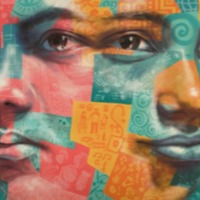
Eedamma
It is estimated that almost 8 million people are living in conditions of modern slavery in India (GSI 2018). The skewed sex ratio in some regions of India has fuelled the trafficking and selling of women and young girls as brides within India. Women are reportedly sold off into marriage by their families, sometimes at a young age, and end up enduring severe abuse, rape and exploitation by their husbands. It is also reported that women and girls from impoverished backgrounds have been lured by promises of marriage by younger men from urban areas, then forced into sex work once married. Eedamma was married at 13 years old to a bonded labourer of a different caste. Since her marriage, she has been subjected to physical abuse daily and has food restricted. As a result, she ran away from her in-laws back home.
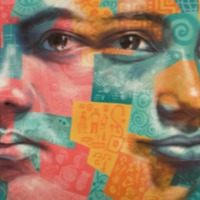
Roja
It is estimated that almost 8 million people are living in conditions of modern slavery in India (GSI 2018). The skewed sex ratio in some regions of India has fuelled the trafficking and selling of women and young girls as brides within India. Women are reportedly sold off into marriage by their families, sometimes at a young age, and end up enduring severe abuse, rape and exploitation by their husbands. It is also reported that women and girls from impoverished backgrounds have been lured by promises of marriage by younger men from urban areas, then forced into sex work once married. Roja was forced to marry at the age of 15. She has no food and goes around the neighbourhood begging for rice, oil and some food. Neighbours felt sorry for her in the beginning and tried to give her some supplies but now they avoid her. She is going through immense anxiety and depression. Roja curses her parents for not listening to her and getting her married at such a young age. The community is working on her husband to abandon her and remarry since she miscarried four times. She feels that no other girl should face problems as she did.
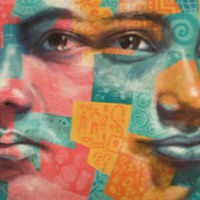
Muthyam Mamata
It is estimated that almost 8 million people are living in conditions of modern slavery in India (GSI 2018). The skewed sex ratio in some regions of India has fuelled the trafficking and selling of women and young girls as brides within India. Women are reportedly sold off into marriage by their families, sometimes at a young age, and end up enduring severe abuse, rape and exploitation by their husbands. It is also reported that women and girls from impoverished backgrounds have been lured by promises of marriage by younger men from urban areas, then forced into sex work once married. Despite Muthyam Mamata’s protests, she was married against her will at the age of 17. Mamata conceived within a year of her marriage and working through her pregnancy, became malnourished and underweight.
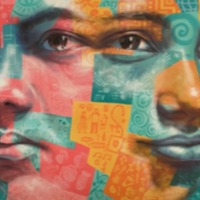
Padmamma
It is estimated that almost 8 million people are living in conditions of modern slavery in India (GSI 2018). The skewed sex ratio in some regions of India has fuelled the trafficking and selling of women and young girls as brides within India. Women are reportedly sold off into marriage by their families, sometimes at a young age, and end up enduring severe abuse, rape and exploitation by their husbands. It is also reported that women and girls from impoverished backgrounds have been lured by promises of marriage by younger men from urban areas, then forced into sex work once married. Padmamma’s marriage was fixed for her when she was 16 years old. Throughout the marriage Padmamma was subjected to attempts of coercion, hostility, lack of medical care and physical abuse by her husband and his family.
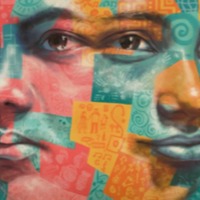
Mamata Chatla
It is estimated that almost 8 million people are living in conditions of modern slavery in India (GSI 2018). The skewed sex ratio in some regions of India has fuelled the trafficking and selling of women and young girls as brides within India. Women are reportedly sold off into marriage by their families, sometimes at a young age, and end up enduring severe abuse, rape and exploitation by their husbands. It is also reported that women and girls from impoverished backgrounds have been lured by promises of marriage by younger men from urban areas, then forced into sex work once married. Mamata Chatla wanted to continue her studies, but was forced to marry her aunt’s son. After a while her husband became suspicious of her talking on the phone and began to beat Mamata. One day, Mamata’s husband collapsed and died, the whole neighbourhood attacked her and she was forced to return to her parent’s home.
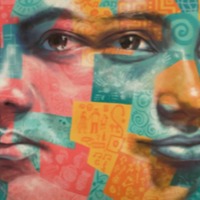
Ira
There are an estimated 794,000 people living in conditions of modern slavery in Russia (GSI 2018). Women and children are subjected to commercial sexual exploitation and sex trafficking in prostitution and pornography. Women are lured by the promise of lucrative employment and a new location, travelling to the country under the pretence of legitimate employment and a better life. However, when they arrive, they are forced into prostitution in brothels, hotels and saunas. There is also evidence of traffickers advertising sexual services of children online. However, despite the evidence of sex trafficking in Russia, it remains an under-recognised area of enslavement in the country. Ira is from a small town in the Vitebsk region of Belarus. Never having a close relationship with her mother, she ran away numerous times. Ira married young and gave birth to a daughter, however the family had little money and no stable accommodation. Ira returned to her mother but found their relationship had not improved. As Ira had little education, it was difficult for her to find a job in her small town. Her neighbour introduced her to a friend from St. Petersburg who earned money by providing escort services. Ira travelled to Russia to work, however upon arrival the work was not what Ira was promised. She found herself forced to provide sexual services to men who could often be violent. Ira escaped one day, jumping from a third story window, sustaining injuries that led to her being unable to walk and confined to a wheelchair. Ira has now found stable employment and has received psychological and reintegration assistance within the counter-trafficking programme implemented by the IOM office in Belarus.
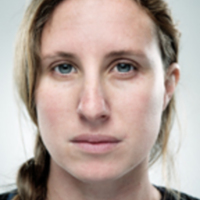
Esther
There are an estimated 403,000 people living in conditions of modern slavery in the United States (GSI 2018). Among this number, are children subjected to forced marriage. A study published on child marriage in 2011 determined that the prevalence of child marriage among women in the US was 8.9 percent, meaning that over 9.4 million US women were married at age 16 or younger. Forced marriage and child marriage are understudies problems within the United States and more research is needed to determine what drives its occurrence. Esther was 17 years old when she was forced to marry a boy against her will. She was subjected to emotional, physical and sexual abuse daily by her husband. After 9 years, Esther was finally able divorce her abusive husband, however was coerced into having her divorce arbitrated by a religious court that deemed she must raise her children in the same insular religion in which she was raised and married. Unchained provided Esther with an attorney who was able to win Esther full custody of her children and the rise to raise them as she chooses.
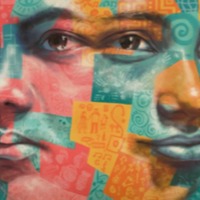
Sarah
UK children continue to be subjected to sex trafficking within the country. Children in the care system and unaccompanied migrant children are particularly vulnerable to trafficking. The United Kingdom remains a significant destination for men, women and children trafficked for the purposes of commercial sexual exploitation and forced labour. The latest government statistics derived from the UK National Referral Mechanism in 2014 reveal 2,340 potential victims of trafficking from 96 countries of origin, of whom 61 percent were female and 29 percent were children. At least one child a day is trafficked into Britain according the to the Human Trafficking Foundation, with children forced to work in the sex industry, domestic service, cannabis cultivation or as criminal on the streets. Child victims of human trafficking primarily originate from Romania, Vietnam, Nigeria, and from within the UK itself. Sarah was 10 years old when she began buying illegal cigarettes and alcohol from a gang in the UK, often not having to pay because they were her 'friends'. After 2 years, the gang told Sarah that she had a £75,000 debt that she would have to pay for by transporting drugs and providing sexual services. Despite being in the care system, at school and having a social worker, it wasn't until a police officer looked further in to Sarah's case that she was rescued from her situation. Sarah talks about the system failures that led to her trafficking.
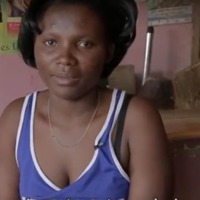
Janet B
Uganda remains a source, transit and destination country for men, women and children subjected to forced labour and sex trafficking. Ugandan children as young as seven are exploited in forced labour in agriculture, fishing, forestry, cattle herding, mining, carpentry, bars, restaurants and domestic service. Girls and boys are also exploited in prostitution, with recruiters targetting girls and women between the ages of 13 and 24 for domestic sex trafficking. 54,000 girls under 18 are sex workers in Uganda. Lured by false promises of education and good jobs. Others are escaping poverty, sexual abuse and child marriage. Janet was 15 when she was forced to marry a man who was 36 years old. Her husband infected Janet with HIV and, ostracised by her family, she ran away to Kampala city. Upon arriving in Kampala, Janet was forced to undertake sex work in order to survive. With the help of Plan International, Janet was able to escape sex work and train to become a hairdresser.
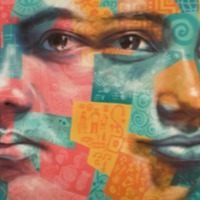
Bhagyalakshmi
India has a population of more than 1.3 billion people, there are still at least 270 million people living on less than US$1.90 per day. While laws, systems and attitudes regarding key 'fault lines' such as the caste system, gender and feudalism are rapidly changing, social change of this depth and scale necessarily takes time. In this context, it is perhaps unsurprising that existing research suggests that all forms of modern slavery continue to exist in India, including intergenerational bonded labour, forced child labour, commercial sexual exploitation, forced begging, forced recruitment into nonstate armed groups and forced marriage.While bonded labour has been outlawed for decades, survey data and pre-existing research confirms that this practice still persists. Bonded labour is not only illegal, research confirms that it has serious negative health impacts for those affected, who typically work in unsanitary and dangerous working conditions with no access to health care. Bhagyalakshmi tells of how she was forced to leave her studies when her mother became ill and her father had to borrow money to pay for an operation. Bhagyalakshmi was forced to work in a mill in order to help pay off the debt, working 10 hours a day with little rest. After working for 2 years Bhagyalakshmi was married and thought her life would get better. However, her husband was also poor and slowly became an alcoholic, leaving her to carry out all the household responsibilities and work to provide the family with an income. One day her husband became ill and Bhagyalakshmi was forced to borrow money and once again pay off her debt working at the mill, where she and other women developed health issues and were subjected to physical violence and sexual exploitation.
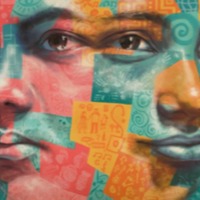
Aarya
Experts estimate millions of women and children are victims of sex trafficking in India. Traffickers use false promises of employment or arrange sham marriages in India or Gulf States and subject women and girls to sex trafficking. In addition to traditional red light districts, women and children increasingly endure sex trafficking in small hotels, vehicles, huts, and private residences. Traffickers increasingly use websites, mobile applications, and online money transfers to facilitate commercial sex. Children continue to be subjected to sex trafficking in religious pilgrimage centers and by foreign travelers in tourist destinations. Many women and girls, predominately from Nepal and Bangladesh, and from Europe, Central Asia, Africa, and Asia, including minority populations from Burma, are subjected to sex trafficking in India. Aarya obtained a job in domestic work after her father's alcohol consumption meant there was a shortage of food for the family. Aarya was subjected to sexual exploitation by her employer and eventually moved to a flat where she was forced to perform sexual services for clients. Unable to tell her parents under fear of losing much needed income for the family Aarya remained silent about her exploitation.